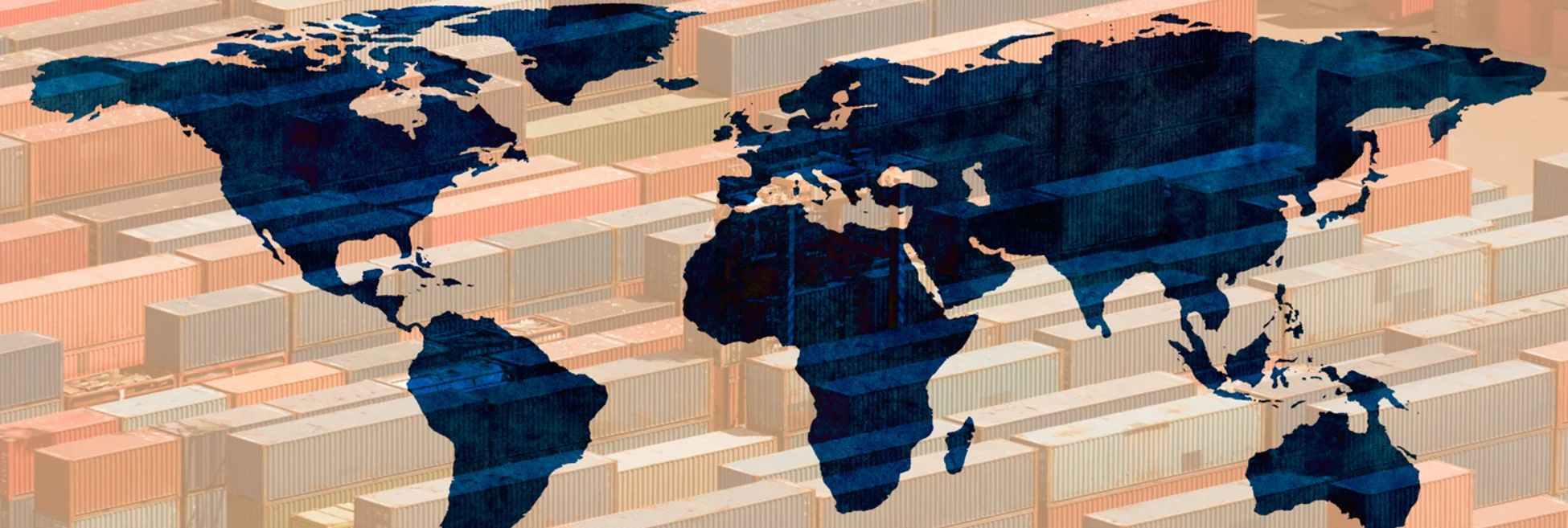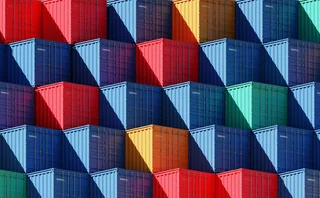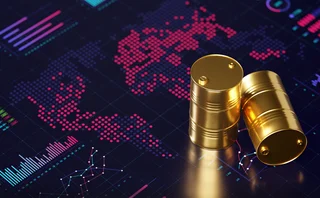

Energy Risk Commodity Rankings: the return of geopolitical risk
Geopolitical tensions introduced extreme volatility to many commodity markets in 2018, while environmental markets began to take off
Click here to view the full tables
Commodity markets have not been for the faint of heart in recent months. Participants have had to contend with whipsawing oil and metals prices, surging carbon costs and spates of negative power prices. The increasing interest in nascent environmental markets has also given rise to liquidity challenges.
This year’s Energy Risk Commodity Rankings show which firms, according to their clients, have navigated these issues particularly well. The survey, which ran between November 28, 2018 and January 11, 2019, asked respondents – all of which had to be active market participants – to state their preferred dealer and broker in a variety of over-the-counter commodity markets and services. This year’s survey, which received 1,195 valid votes, reflects the changing commodities landscape, with environmental markets (emissions, biofuels and weather) receiving a greater number of votes than ever before. This led to names such as Greenergy, Neste and Blue Ocean Brokerage appearing in the rankings for the first time, and to others, such as environmental brokers SCB, and weather and energy dealer Sompo, rising up the leader boards.
Looking across the entire commodities complex, the top three dealers – Societe Generale, UBS and JP Morgan – remain unchanged from the 2018 rankings, but they were followed by three big climbers – Goldman Sachs, Citi and Axpo. Goldman held onto its number two position in oil, while gaining in natural gas and metals, while Citi made steady progress across the board with small gains in oil and precious metals and a bigger rise in natural gas and base metals. Meanwhile, Axpo retained its number one slot in power and moved up the table in natural gas.
Volatile oil
For oil markets, the second half of 2018 was characterised by huge volatility. North Sea Brent hit a four-year high in October with $85.16 per barrel (/bbl), only to slide to a low of $50.57/bbl by December 28. According to Sunil Sharma, London-based head of corporate commodities sales for Europe, the Middle East and Africa at JP Morgan, the wild ride in the oil price over the course of 2018 resulted in upticks of both consumer and producer oil-hedging activity.
“The result of the massive spike in oil volatilities had the knock-on effect of large-scale hedging from producers and increased hedging from consumers, especially airlines,” he says. “When oil prices dropped towards the end of the year, these producers were sitting on big mark-to-market gains from their hedges, some of whom then chose to unwind with intention to re-hedge at higher levels; consumers used the sharp drop in prices to increase their hedging ratios and lock in the lower prices.”
Oil wasn’t the only commodity to experience significant price volatility last year. Geopolitics introduced extreme price movements into the metals complex as well. Political tensions between the US and Russia morphed into sanctions against the European state in April, when the US Treasury took action against seven Russian businessman and the 12 companies they own and control. While the majority of firms targeted were banks or weapons producers, crucially the measure also included Oleg Deripaska, owner of Rusal, the world’s second largest aluminium producer, responsible for 9% of global output.
The result was what Francois Combes, London-based global head of metals markets at Societe Generale, describes as “extreme” levels of volatility across the whole base metals spectrum, but particularly the normally staid aluminium sector. This metal saw its six-month implied forward volatility jump from around 15–16% to 25% almost overnight – levels Combes says haven’t been seen since 2008.
“The sanctions on Russia affected metals more than anything else, which created volatility in the price and the curve structure we had not seen for a long time,” he says. “There were a number of issues to deal with, such as the credit exposure on Russian counterparties, with the extreme volatility and market risk on top of that.”
The result of the massive spike in oil volatilities had the knock-on effect of large-scale hedging from producers and increased hedging from consumers, especially airlines
Sunil Sharma, JP Morgan

Combes described April as a “particularly memorable month”, which required careful navigation, but this also meant significant trading opportunity. According to Sharma, the April sanctions “spooked” the aluminium market and prompted significant amounts of producer hedging, which he says was matched to a lesser extent in the copper sector.
Other geopolitical tensions also exerted pressure last year. For example, in March, the US introduced a 10% tariff on aluminium imports, leading China to impose a retaliatory tariff in April, which led to a full-blown trade war over the course of the year. Political uncertainty in oil-producing Venezuela and the UK also impacted markets.
“What we saw in 2018 was the return of geopolitics to the markets,” says Jonathan Whitehead, global head of commodities for Societie Generale. “[It was] not just sanctions affecting specific metal markets, but also wider issues, such as the US-China trade dispute and [unrest in] Venezuela, while Brexit is obviously something that is increasingly front of mind.”
The resulting ramp up in trading during the second quarter of 2018 made a welcome change from the slow activity of 2017, JP Morgan’s Sharma says. “Although there was a slow start to the year, the appearance of volatility across a number of asset classes throughout 2018 meant it was a much better year for commodity players than the previous 12 months. There’s a strong expectation across [Wall] Street that things are turning around for the commodities sector.”
Precious respite
Things were a little more sedate in the precious metals complex, although palladium saw significant price moves. According to Philip Aubertin, London-based global head of the precious metals, rates and physical business at UBS – which again topped this sector of the dealer rankings – a supply imbalance had been building for some time. The result was massive price moves for palladium, which opened the year at $1,066 per ounce, hit a year low of $845/oz on August 14 and then rebounded to close the year at $1,275/oz.
“Palladium was in backwardation in the forward market for the entire year, [but went] to another level in the last two to three months of 2018, where we went into severe backwardation as the spot price moved higher,” he says.
However, gold was much more stable, notes Edel Tully, global head of precious metal distribution at UBS. “Although there were several areas of heightened political risk globally in 2018, [gold was stabilised by] a stronger dollar and rising US bond yields.”
Meanwhile, in the power markets, things were very different. “There was very high volatility in the power market throughout the whole year,” says Domenico De Luca, head of trading at European energy firm Axpo, which headed the power dealer rankings, and shot up from 10th to sixth place in the overall dealer rankings. “This came from many sources but what really stands out is the increase in the CO2 price, which went up massively in the past 12 months. And this, of course, has a knock-on effect on power price volatility,” he says.
Carbon gains
The price of carbon under the European Union’s emissions trading system increased five-fold between the start of 2017 and the end of 2018. EU Allowances (EUAs) rose from €5 per tonne of CO2 in January 2017, to nearly €25/tonne by December 2018.
One veteran European power trader, told Energy Risk that “over-exuberant” activity by investors, particularly in the later stages of 2018, was responsible for a major portion of the carbon price rise. Others disagree. De Luca concedes that momentum trading from hedge funds was an important driver of EUA volatility and says he expects more short-term price moves in the future,. But he says that, ultimately, it is economic fundamentals that are driving the carbon market.
There was very high volatility in the power market throughout the whole year. This came from many sources but what really stands out is the increase in the CO2 price, which went up massively in the past 12 months
Domenico De Luca, Axpo

He pointed to a number of factors, but particularly the market stability reserve, which came into effect in January this year. The MSR will address the current over-supply of EUAs – which has weighed on prices for years – by reducing the annual auction volumes. Between 2019 and 2023, auction volumes will be reduced each year by 24% of the market surplus from the previous year. Initially, a withdrawal rate of 12% had been planned. Analysts estimate that around 400 million certificates will be withdrawn from the market in 2019 alone.
While most commodities markets are hugely affected by government policy, in carbon markets this reaches an entirely new level. “In all other commodities supply and demand is based on physical production and consumption, but when it comes to carbon markets it’s the stroke of a pen from policy-makers,” says Societe Generale’s Whitehead. “So while the demand is physically-based, the supply is effectively government policy.”
By May last year, people began to realise the carbon markets were going to become a lot shorter than had been previously thought, says Whitehead. “We saw industrial buyers of carbon snapping up EUAs last year, especially the outer part of the curve.”
Carbon prices also shot up in the US Californian emissions trading scheme where record sales took place in October and November 2018, according to Kevin McGeeney, Geneva-based chief executive of SCB, which topped the emissions and biofuels rankings this year.
McGeeney says the business of trading energy in western Europe and North America is “changing beyond recognition”. He points to Swiss firm Gunvor’s $745 million financing facility from ING Bank in October 2018, as an example of the secular shift occurring in the energy sector to include the pricing of externalities. The Gunvor loan, which provides working capital for two refineries, is structured so that the interest rate is explicitly linked to the environmental impact and transparency of the project. If emissions shoot up, so will the interest rate on the loan.
The pace of change is slightly slower in eastern Europe, according to Igor Koprivnikar, board member at Slovenia-based GEN-I, which again topped the eastern European power dealer rankings. The spread on power prices in the region relative to those in western Europe has continued to widen, and Koprivnikar says this trend is likely to continue for several more years, alongside heightened price volatility.
While this is reflective of a predicted shortage of capacity in the region, and a less developed renewables market compared with western Europe, there is potential upside, Koprivnikar believes. The volatility will enable the firm to provide more synthetic risk management services to its end-users, particularly if more providers enter the market, he says.
“Due to increased volatility of power prices, we see a huge potential in options trading with standardised and non-standardised products, especially [for] our tailor-made solutions for producers and industrial end-customers,” he says.
Moreover, the potential for options is likely to grow as more markets become electronic, say participants. While the electronification of over-the-counter commodity trading lags that of financial markets, the number of screen-based commodity markets is growing each year, say market participants. This, it is hoped, will attract more players to the market in coming years, bringing in much-needed liquidity.
“Electronification has continued to be a big theme in 2018 and we have really been supporting our clients towards this,” says JP Morgan’s Sharma. “We also now have increasing functionality that can be used to execute trades on a mobile phone. Significantly more volume is being trading electronically; in fact the majority of our small-ticket trades are now done via the e-platform. One real positive for this is that the new generation of finance executives at our clients are digitally native and are therefore open to the potential offered by technology.”
Currently, electronification is further ahead in metals markets than energy, but it is hoped energy markets will catch up in the coming years. “Given the off-exchange nature of a lot of energy products, such as jet fuel, electronification of energy markets is taking a bit longer than metals and that’s one of the focus areas for us in 2019,” says Sharma.
Additional reporting by Stella Farrington
How the poll was conducted
The Energy Risk Commodity Rankings survey was live between November 28, 2018 and January 11, 2019. The survey asked respondents to vote for their top three dealers and brokers in any markets in which they had been active over the previous year. The breakdown of participants in each sector was as follows: crude oil and refined products North America 21%; crude oil and refined products Europe 24.2%; crude oil and refined products Asia 11%; natural gas US and Europe (25.4%); power 20.3%; precious metals 23.6%; agriculture 19.1%; emissions 14.6%; biofuels 16.6%; weather derivatives 4.2%. Other categories in the poll were coal, freight and iron ore.
The rankings poll is designed to reflect market participants’ perception of a dealer or broker based on the overall quality of service they offer their clients. It is not intended to reflect volumes traded in any market. Instead, respondents vote according to a range of criteria including reliability, pricing, liquidity provision and speed of execution. The rankings are also not designed to present the views of a representative share of the commodity trading community, since the poll is open to any market participants, and the results could be influenced by the efforts of dealers and brokers to canvass their clients for votes. However, the Energy Risk team makes every effort to ensure that invalid votes are excluded from the final results. This includes instances where the same IP address is used to cast multiple votes, when groups of employees from the same desk vote for the same firm, or when one voter chooses the same firm indiscriminately throughout the poll. Voters are also excluded if they do not trade in the market in which they have cast a vote. In addition, categories that do not attract enough votes are excluded from the final results.
The methodology
In order to create the final list of rankings, Energy Risk aggregates the results, weighting them by awarding three points for first-place entrants, two points for second place and one point for third. The top firms in each market are then listed according to the percentage of votes they have accrued, with the winners in each category based on the total percentage of votes per firm.
The overall rankings (Best overall dealer and Best overall broker) are calculated by aggregating the votes cast in the individual categories. Following closure of the poll, the results are subject to an internal review process, which can result in categories being dropped or aggregated if they do not have enough votes. The outcome of the review is final.
Only users who have a paid subscription or are part of a corporate subscription are able to print or copy content.
To access these options, along with all other subscription benefits, please contact info@risk.net or view our subscription options here: http://subscriptions.risk.net/subscribe
You are currently unable to print this content. Please contact info@risk.net to find out more.
You are currently unable to copy this content. Please contact info@risk.net to find out more.
Copyright Infopro Digital Limited. All rights reserved.
You may share this content using our article tools. Printing this content is for the sole use of the Authorised User (named subscriber), as outlined in our terms and conditions - https://www.infopro-insight.com/terms-conditions/insight-subscriptions/
If you would like to purchase additional rights please email info@risk.net
Copyright Infopro Digital Limited. All rights reserved.
You may share this content using our article tools. Copying this content is for the sole use of the Authorised User (named subscriber), as outlined in our terms and conditions - https://www.infopro-insight.com/terms-conditions/insight-subscriptions/
If you would like to purchase additional rights please email info@risk.net
More on Commodities
Energy Risk 2024 Software Rankings: IT demands increase amid rising risk
Heightened geopolitical and credit risk increase requirements on commodities software
Energy Risk Asia Awards 2023: the winners
Winning firms demonstrate resiliency and robust risk management amid testing times
ION Commodities: addressing the market’s recent pain points
Energy Risk Software Rankings winner’s interview: ION Commodities
Energy Risk Commodity Rankings 2023: adapting to new market dynamics
Winners of the 2023 Commodity Rankings provided reliability when clients faced extreme change
Energy Risk Software Rankings 2023: managing uncertainty
Unpredictable markets make CTRM software choices key
Navigating the volatility and complexity of commodity markets
Commodity markets have experienced significant challenges since the Covid-19 pandemic, the conflict in Ukraine and the subsequent sanctions imposed on Russia. These unprecedented events have caused fluctuations in supply and demand, disrupted global…
Energy Risk Asia Awards 2022
Recognising excellence in energy risk management
Market shrugs off EC’s plan to change gas benchmark
Dutch TTF prices unmoved, as market participants say they are “not taking it seriously”
Most read
- Top 10 operational risks for 2024
- Japanese megabanks shun internal models as FRTB bites
- LCH issued highest cash call in more than five years







